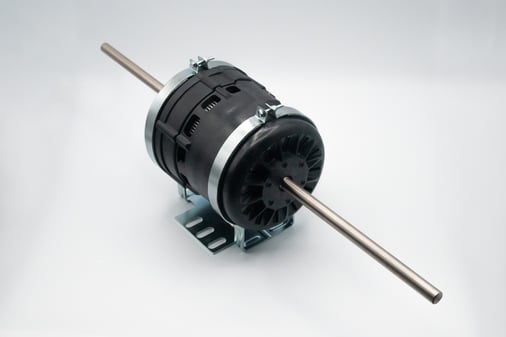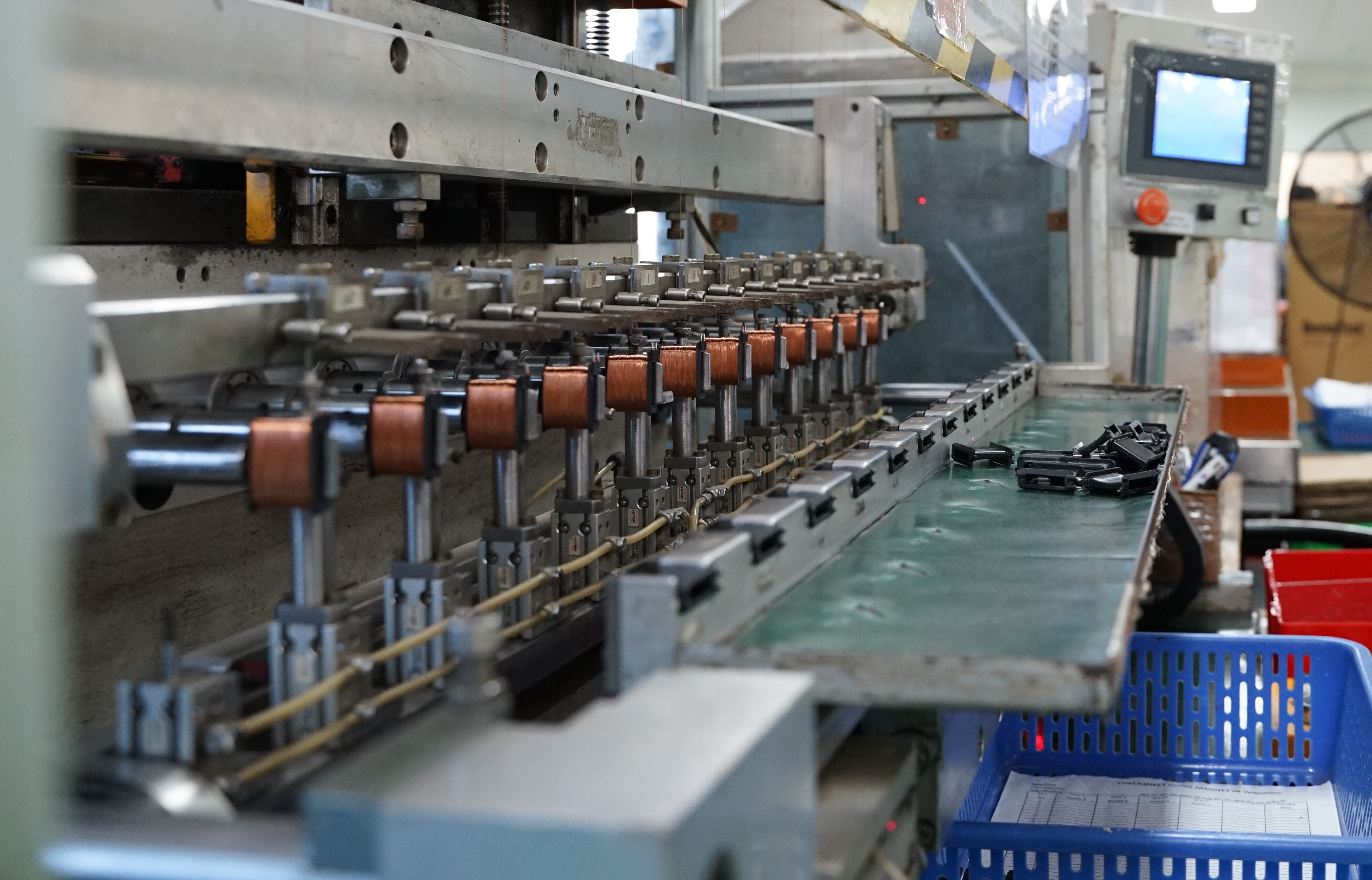You are seeing it everywhere. Electric cars are popping up in your neighborhood more and more, the U.S. government is incentivizing homeowners to make high-efficiency upgrades including air conditioners and even light bulbs. The race to normalize energy-efficient practices is on. Electric motor-driven systems (EMDS) are the largest single source of electricity usage in the world. A 2019 study, titled “The U.S. Industrial and Commercial Motor System Market Assessment Report” found that three-phase electric motors over one horsepower in industrial and commercial applications account for 29% of the United States’ total electrical-grid load, and this isn’t even taking into consideration the impact of fractional-horsepower units. While it’s still a large percentage, technological advances and an increase in funding have led to a 19.4% drop in electric-motor energy consumption across both sectors since 1996. But this is just in the U.S. When looked at from a global perspective, the most recent studies report the percentage of electricity use jumps close to 40%.
Currently, permanent split capacitor motors (PSC) lead the market, commonly found in refrigerator compressors, office machinery and HVAC equipment. As a type of single-phase AC motor, the PSC consists of a motor and a cage-type rotor, which operates at a constant speed and the inability to control its electrical output. Understandably, this results in a significant loss in efficiency. However, their basic design and corresponding low price tag make them attractive to manufacturers who have cost top-of-mind.
 The PSC motor, however, is now facing an uphill battle as its prettier, more likable cousin, the electrically commutated (EC) motor, is making its way into the hearts of manufacturers around the world. An EC motor is a version of a brushless DC motor (BLDC), in which a permanent magnetic rotor and wound stator poles are utilized. They are set apart from other BLDC motors by their utilization of an integrated microprocessor circuit allowing for speed and torque control. They are complex, highly efficient and produce low noise volumes. The caveat: this newer technology and the requirement of both a motor and a controller bring up the cost.
The PSC motor, however, is now facing an uphill battle as its prettier, more likable cousin, the electrically commutated (EC) motor, is making its way into the hearts of manufacturers around the world. An EC motor is a version of a brushless DC motor (BLDC), in which a permanent magnetic rotor and wound stator poles are utilized. They are set apart from other BLDC motors by their utilization of an integrated microprocessor circuit allowing for speed and torque control. They are complex, highly efficient and produce low noise volumes. The caveat: this newer technology and the requirement of both a motor and a controller bring up the cost.
But there is hope! As with any new technology over time, engineers are becoming more innovative and are finding groundbreaking methods to reduce cost, without sacrificing the benefits that make it so appealing in the first place. Additionally, we are seeing EC motors following the principles of Moore’s Law, which says as new technology increases in popularity over time, we see its price go down. Remember the days when an LED flat-screen was $8,000? That same TV now may only cost you a few hundred dollars. Bringing down the cost of EC motors will unlock great potential in both terms of environmental impact and cost of operation.
How is EC Motor Efficiency Determined?
Motor efficiency can be broken down into two main factors: core loss and winding loss. To optimize the application for cost and efficiency, engineers must ensure the electromechanical design balances these losses. This is a function of frequency, magnetic loading, and material selection (just to name a few).
Explaining Core Loss
What is core loss? It is the loss of heat that occurs in a magnetic core due to alternating magnetization. Why is this important? This heat is dissipated into the surrounding environment, reducing the efficiency of the motor. To put it simply, electric motors + heat = motor inefficiency, and that is exactly what you are trying to avoid. Core loss can be divided into two categories: hysteresis losses and eddy current losses. Hysteresis losses occur when a magnetic field passes through a material. This causes the material to become magnetized and then demagnetized, which releases energy in the form of heat. This heat is dissipated as core loss. Eddy current losses occur when a magnetic field passes through the material. This causes the formation of currents in the material, which also releases heat in the same way.
Now, once the frequency and magnetic loading are selected, the magnitude of core losses in an EC motor depends on the material used for the core. For example, the newest trend in motor design is to reduce lamination thickness which will decrease core loss, however this requires more processing of the material, increasing cost.

What is Winding Loss?
Winding loss occurs when electrical currents pass through the windings of the motor. This causes them to heat up, and just like we discussed with core loss, the energy is released as heat. The purpose of these coils is to generate the magnetic flux that pushes and pulls the magnets and the rotor, creating torque. The severity of winding loss is dependent on the material used, which is typically a choice between copper and aluminum. This selection should be considered early in the design process, as most designs do not consider the cost/efficiency tradeoff between the two.

Aluminum vs. Copper Windings – The Great Debate
Who reigns supreme, copper or aluminum? This is a topic that has been widely debated since the 1960’s when aluminum housing wires were said to be a fire hazard, though we have since learned the material itself was not the problem, but the connections. Decades later, because of the unwarranted downfall of its reputation, aluminum wiring in many other applications tends to cause hesitation. However, engineers have been continuing to research if the quality and performance of aluminum windings in EC motors can compare to that of copper.
Aluminum has more than 50% higher resistivity than copper which means for the same size wire, an aluminum winding will have 50% higher resistance and 50% higher losses. However, aluminum is almost 3.5x less expensive than copper on a mass basis. Since aluminum is far less dense, the same winding that has 50% higher losses will be 10x less expensive on a total material basis. Balancing the winding losses with this potential decrease in material costs is key.
The Bottom Line
When it all comes down to it, an EC motor’s efficiency is more complicated than simply its material selection, though this plays a major factor. With innovative design and creative engineering, it is possible to match the power performance of a motor wound with copper to a motor wound with aluminum. We have seen new technology produce comparable efficiency levels, but where these products differ is their cost, with copper coming in significantly more expensive. Is absolute maximum efficiency worth the extra cost? Maybe. Or perhaps you are comfortable with comparable output that is a little easier on your bottom line. Your best bet? Spend time with your electromechanical engineers, ask a lot of questions, and discuss in what areas it makes sense to compromise for your specific application needs.




.jpg?width=176&height=56&name=MR_associatedNetwork_logo%20(1).jpg)